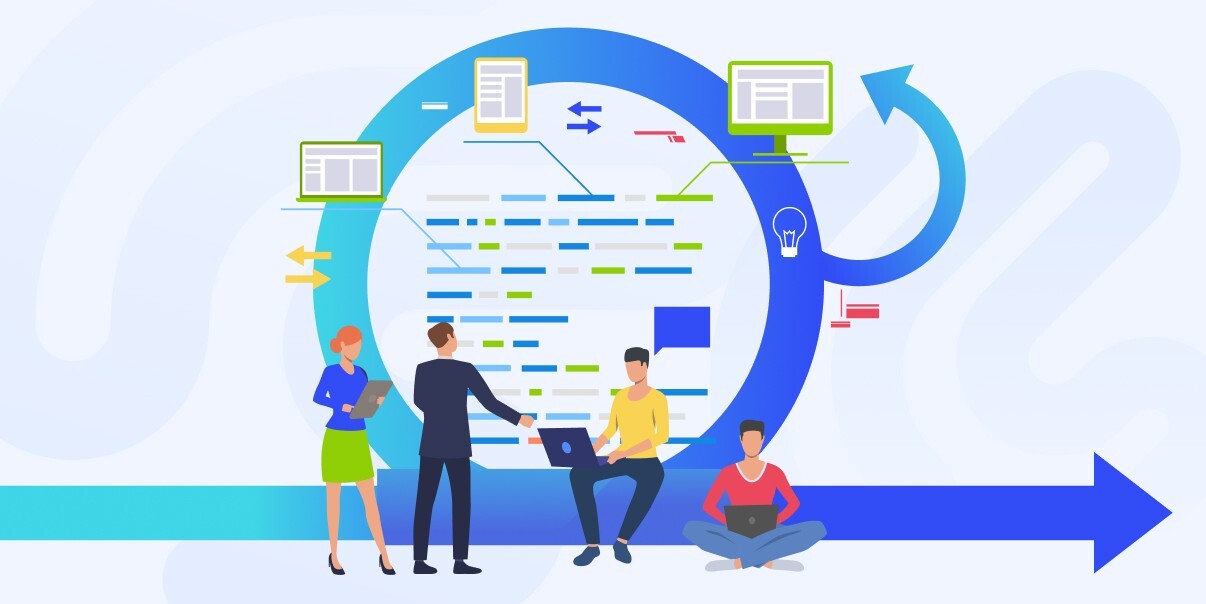
In the world of enterprise software development, rather than a desire, agility is a requisite. The fast and ever-evolving business surroundings necessitate speedy modifications, which should respond to business requirements and trends. Agile methodologies underpin modern software development, allowing companies to rapidly create high-quality software that satisfies their business and market requirements. This paper highlights key concepts and optimal practices to utilize during enterprise software development to implement agile concepts, all taken from the competition between the best enterprise software development companies.
Understanding Agile Methodologies
Agile methodologies reflect a grand departure from conventional waterfall methods in iterative development, customer interaction, and responsiveness. Organizations working with Agile methodologies share common core values of change responsiveness, constant software development, and multi-skilled group cooperation. Scrum, Kanban, and Extreme Programming are three recognized and often used Agile methodologies, with each offering various practices and principles to guide the software development process.
Best Practices for Agile Implementation
Enterprises that consider success in adapting to Agile methodologies on software development to be necessary should be guided by the following best practices designed to improve teamwork, transparency, and learning:
1. Executives sponsorship and organizational alignment. For an enterprise-wide Agile transformation to be successful, organizational transformation must be underpinned by executive commitment and a standard approach. Leadership takes this commitment by constructing a collaborative, creative culture throughout the organization that embodies the Agile present.
2. Cross-functional teams: The second practice is the formation of cross-functional teams which may include developers, testers, designers, and business analysts. Such a strategy facilitates strong collaboration and shared responsibility over the development and completion of deliverables. The idea of ensuring teams are balanced in terms of diverse skill sets is particularly present in the culture of software development corporations. Such an approach favors tenacious innovation and problem-solving.
3. Iterative planning and prioritization: Another consideration entails the execution of frequent planning, including sprint planning, and backlog refinement sessions. Moreover, Agile teams maintain a robust connection with key stakeholders to align all the efforts with the organization’s business objectives.
4. Continuous integration and delivery: Utilizing CI/CD pipelines to automate the build, test, and deployment phases, allowing teams to release software fast and frequently. Continuous feedback loops also help identify defects early and address them quickly, reducing risk and ensuring that the software is more reliable.
5. Transparent communication and cooperation: Transparent and clear communication yields more productive collaboration, trust, and shared comprehension among team members, stakeholders, and consumers. Agile modern technology teams utilize communication platforms like daily stand-up sessions, sprint activity reviews, and retrospective meetings to stay aligned and proactively address difficulties.
Implementation Strategies for Agile Methodologies
Despite the fact Agile brings adaptive and flexible approaches to software development, it should still be carefully and properly implemented. First of all, these strategies of enterprise software development companies in how to lead an Agile transformation
1. Start small and iterate: Yoga Sundram and Kumar emphasize that organizations start small but overgrow when certain achievements are made. Enterprises generally experiment with Agile practice on small, low-risk projects or teams before expanding to larger initiatives. By doing so, teams can acquire information, improve procedures, and address issues in stages.
2. Tailor Agile practice to the organization’s uniqueness: To guarantee that Agile practice is highly incorporated into the enterprise’s software development, frameworks, ceremonies, roles, and artifacts are customized to best meet the demands of the business.
3. Invest in Agile tools and technologies: Enterprise software development companies make other common investments in agile project management tools, collaboration platforms, and software development technologies that help simplify the agile process and workflow. These tools help promote transparency and communication, allowing workers to see their work better and make it visible through customary metrics. monitor the progress and performance of the projects to enhance
4. Cultivate a culture of continuous improvement: For enterprise software development companies, agile transformation is a journey, not a destination, and many of them understand it. It is their starting point, not their endpoint, and they build a culture of continuous improvement, experimentation, learning from failure, and embracing change that will foster innovation and improve theirs.
Conclusion
The advent of Agile methodologies has transformed enterprise software development and helped organizations navigate complexity and change while delivering value to customers at lightning speed. ESD companies that cultivate their talents, follow best procedures, and apply custom-tuned execution tactics through Agile transformations can develop and maintain a source of competitive stability in the modern digital economy. However, as Agile matures, questioners remain, and businesses enter a phase, they must continue to be resistant and flexible, restoring and reshaping their abilities to address stakeholders’ quickly aligning demands in today’s unpredictable and changeable environment.
